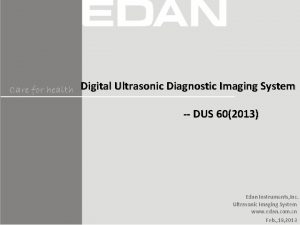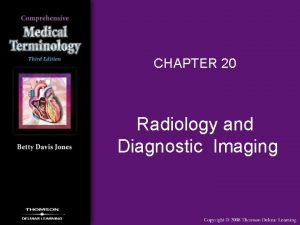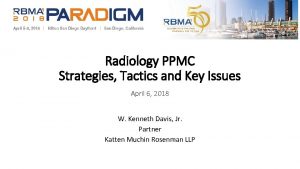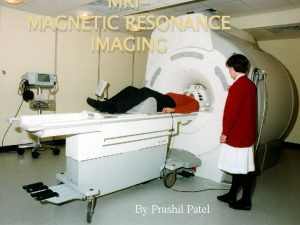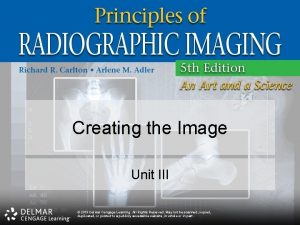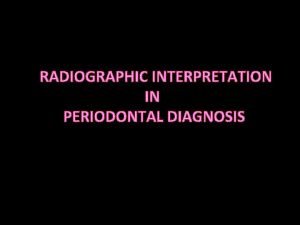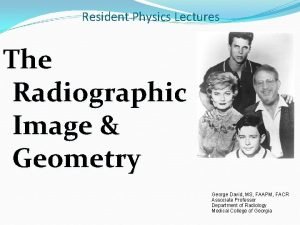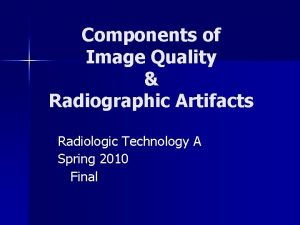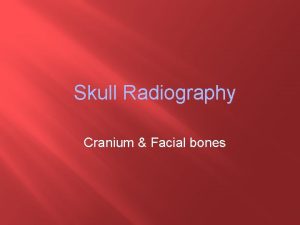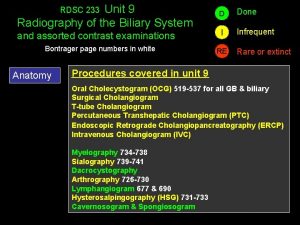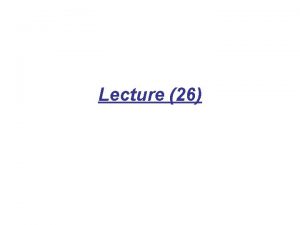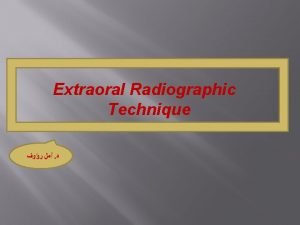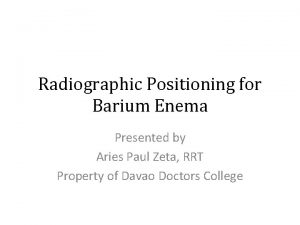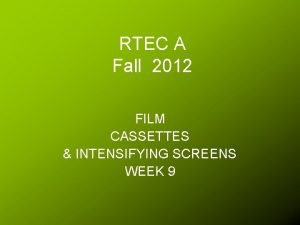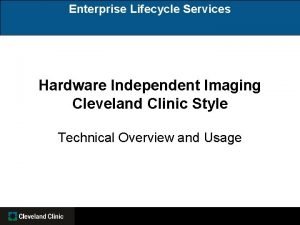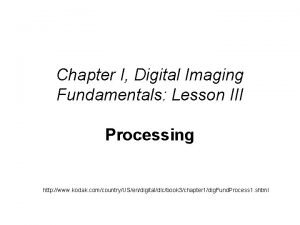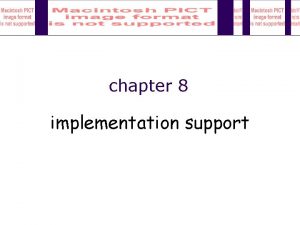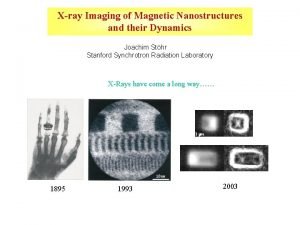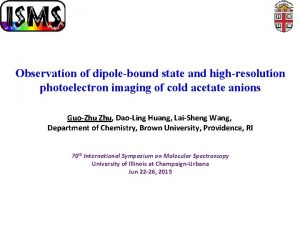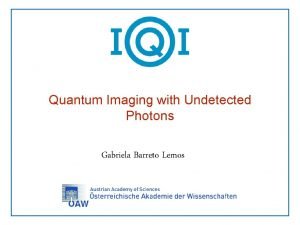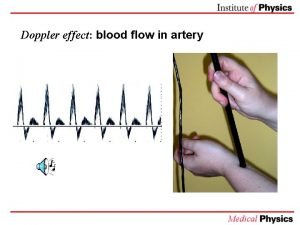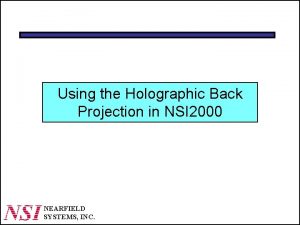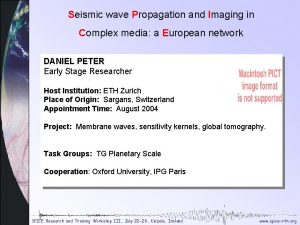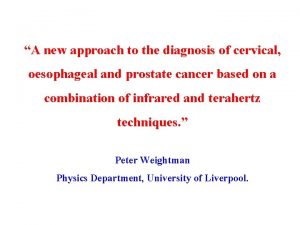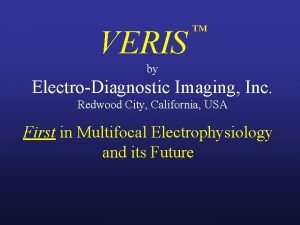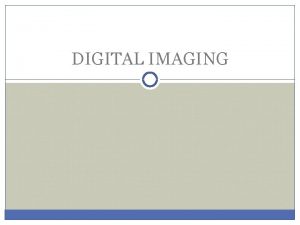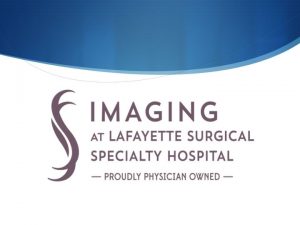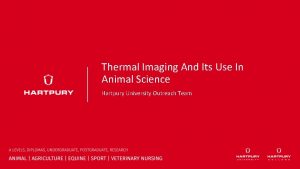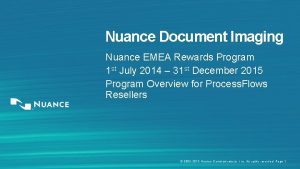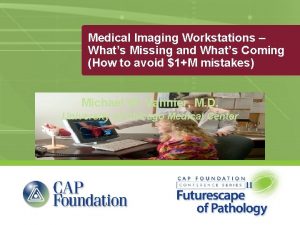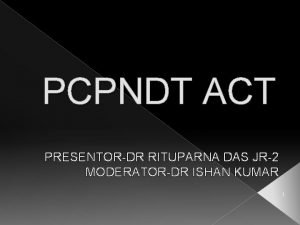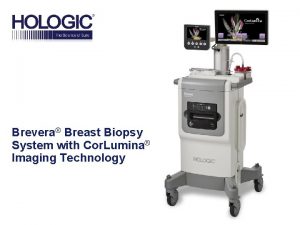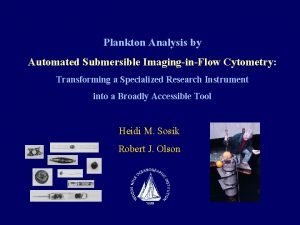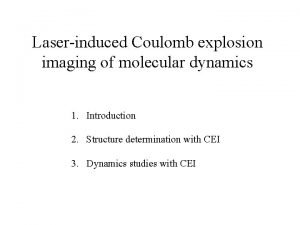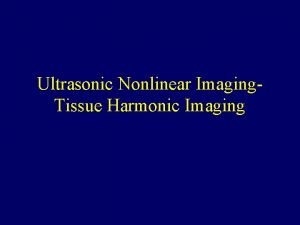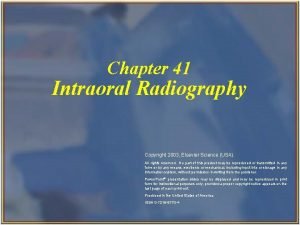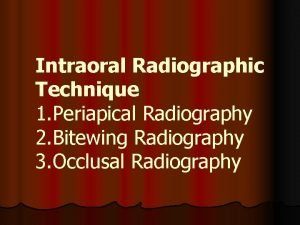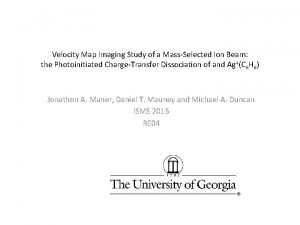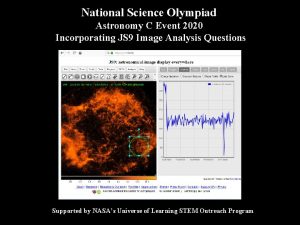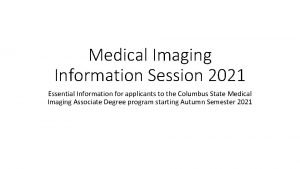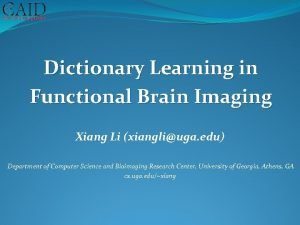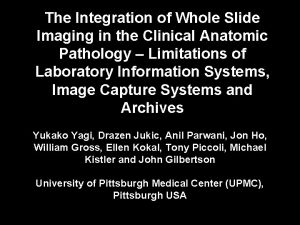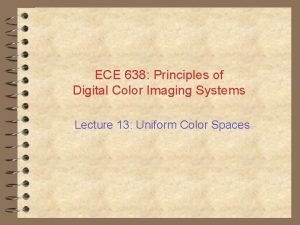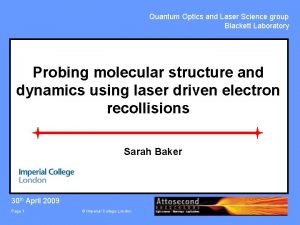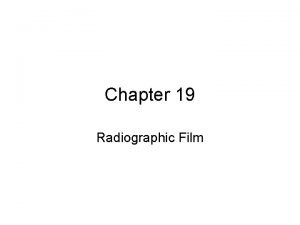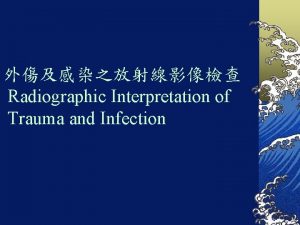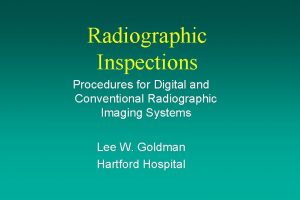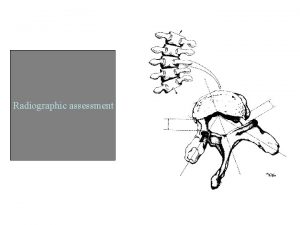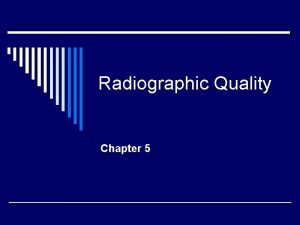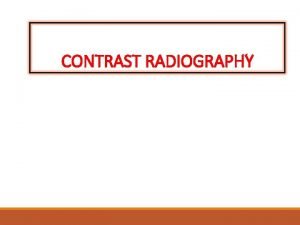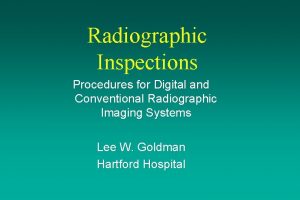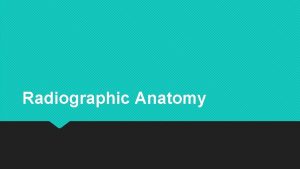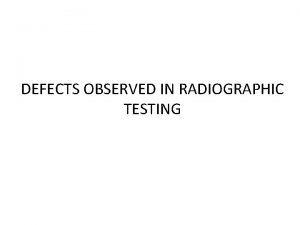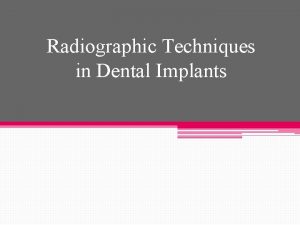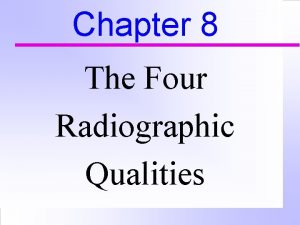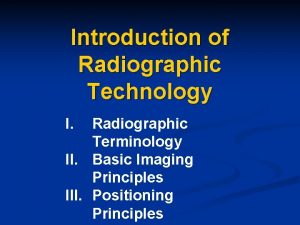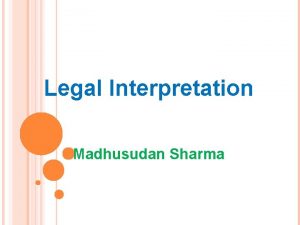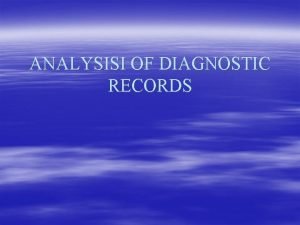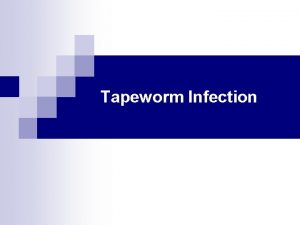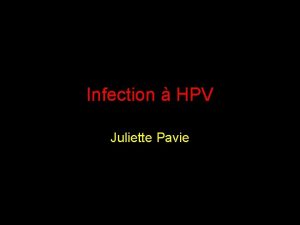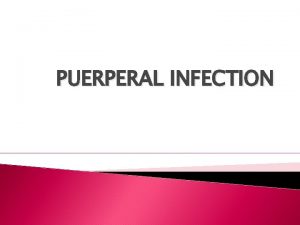RADIOGRAPHIC INTERPRETATION OF INFECTION TRAUMA Diagnostic imaging of
























































- Slides: 56

RADIOGRAPHIC INTERPRETATION OF INFECTION & TRAUMA

Diagnostic imaging of maxillofacial and fascial space infections Anatomical extent of the process Surgically drainable abscesses and fluid collections Demonstrating and assessing associated complications



Plain film examination • • • Periapical X ray Panoramic radiograph : odntogentic infection Anteroposterior and lateral view : cervical soft tissue (airway) submandibular, parapharyngeal, retropharyngeal space (airway compromise)

Periapical X ray

Abscess adjacent to primary tooth

Anatomic location

Caries and periapical lesion


pericoronitis

Preoperative clinical aspects. Proptotic left globe, periorbital swelling preventing spontaneous opening of the eye, subconjunctival ecchymosis, and impairment of ocular motility to the right side

CT scan in axial view. Maxillary sinus filled with pus. Close relationship between upper molar root apexes and maxillary sinus (C). Intraoral view of residual root of tooth #26 affected by extensive carious lesion (D).

Sinusitis Upper molars

Sinusitis (water’s view)

Prevertebral Space Infection(lateral view)

X-ray neck P. A. View : Showing severe acute deviation of trachea to Rt. side

Computed tomograph 3 -dimensional picture Gray scales : more negative --- black more positive --- white CT readily assess the integrity of cortical bone Short time required for CT examination Relative low cost compared to MRI

Computed tomograph CT numbers : Hounsfield units(HU) Air : -1000 HU Fat : -80 to -100 HU Water : 0 HU Blood : 60 to 110 HU Bone : 1000 HU


(A) Sublingual space (long black arrow), submandibular space (long white arrow), mylohyoid muscle (star), hyoglossus muscle (black arrowhead). The root of the tongue is identified by the genioglossus (black circle) and the lingual septum (white arrowhead). The lateral boundary of the submandibular space is formed by the fascial layers on the medial margin of the platysma muscle (dashed white arrow). •

• (C) Inset: schematic of coronal plane through the oral cavity. The shaded purple area illustrates the horseshoe shaped configuration of the submandibular space and the bilateral continuity of the space ventral to the mylohyoid anterior belly of the digastric muscles.

• (B) Coronal CT view at the level of the oral cavity. Sublingual space (long black arrow), submandibular space (long white arrow), mylohyoid muscle (star), genioglossus (black circle), and the lingual septum (white arrowhead), platysma muscle (dashed white arrow), buccinator muscle (curved arrow).

• Schematic diagram of the relationship of the tooth roots to the sublingual, submandibular, and buccal spaces. Infection extending through the lingual cortex from premolar and molar teeth will involve the sublingual space, whereas infection from molar teeth will involve the submandibular space.

• Submandibular space abscess or phlegmon. Axial contrast-enhanced CT (A) shows a large fluid collection within the right submandibular space (arrow), with thickening of the buccinator muscle on the lateral aspect of the mandible and stranding in the subcutaneous tissues representing myositis and cellulits respectively.

(B) Axial bone CT shows an endodontically treated (root canal) second molar root with apical periodontitis (C).

Ludwigs angina

Ludwigs angina • Acute respiratory distress. Axial (A) and coronal (B) contrast-enhanced CTs demonstrate extensive edema and soft tissue thickening of the tongue, sublingual, and submandibular space seen clinically as angioedema, cellulitis, and hematoma. A calcification lies within the genioglossus muscle (arrow), representing either a foreign body or displaced sialolith and is the likely initiating factor.

Magnetic resonance imaging 3 D (以往CT只有2 D) T 1 image : good anatomical detail T 2 image : very sensitive in detecting disease processes T 1 : fat, highly proteinaceous tissue T 2 : water content

MRI

Sialolithiasis • Sialolithiasis. (A) Axial contrast-enhanced CT. Calcified sialolith in Wharton's duct at the junction of the superficial lobe with the deep lobe of the submandibular gland. (B) Axial contrastenhanced CT from the same patient in A. The black arrow points to a thickened and enhancing wall of the dilated submandibular duct. .

Sialolithiasis • (C) Contrast-enhanced axial T 1 -weighted MRI of a different patient demonstrating a calcified sialolith in left Wharton's duct (arrow). (D) Axial T 2 weighted MRI of the same patient in C showing the sialolith with surrounding fluid (arrow). The actual size of this stone was approximately 20% smaller than measured on the MRIs. Size inaccuracies for sialoliths generally would only affect sialoendoscopic or interventional retrieval or lithotripsy.

Radiographic interpretation trauma


Radiographic examination Presence of root fracture Degree of extrusion or intrusion Presence of preexisting periapical disease Extent of root development Size of the pulp chamber and root canal Presence of jaw fractures Tooth fragments and foreign bodies lodged in soft tissue





有幾處有 Fracture lines

Anatomic distribution of mandibular fracture



Maxillary fracture Infraorbital fracture Lateral wall fracture

Waters view

Peri-oral soft tissue avulsion and

Maxillary fractures, comminuted mandibular ramus/body fractures and bilateral condyle fractures.

Le Fort midfacial fractures

3 -D CT reconstruction showing a Le Fort type 1 fracture

Le. Fort Fracture II

Le. Fort Fracture III

Zygomatic complex fracture

Zygomaticomaxillary arch Fracture

Submental-vertex view


The End
 Radiographic errors in dentistry ppt
Radiographic errors in dentistry ppt Frc driver station mac
Frc driver station mac Digital ultrasonic diagnostic imaging system
Digital ultrasonic diagnostic imaging system Brong-kog-rah-fee
Brong-kog-rah-fee Ppmc diagnostic imaging
Ppmc diagnostic imaging Diagnostic imaging
Diagnostic imaging Uwe year abroad
Uwe year abroad How does interpretation b differ from interpretation a
How does interpretation b differ from interpretation a Off focus grid error
Off focus grid error Radiographic film
Radiographic film Trabecular pattern of maxilla and mandible
Trabecular pattern of maxilla and mandible Geometric penumbra formula
Geometric penumbra formula Single door system in darkroom
Single door system in darkroom Guide shoe mark artifact
Guide shoe mark artifact Radiographic baseline skull
Radiographic baseline skull T tube cholangiogram
T tube cholangiogram Anthropological baseline
Anthropological baseline Reverse towne projection
Reverse towne projection Left sim's position for enema
Left sim's position for enema Sid vs oid
Sid vs oid Radiographic films
Radiographic films Sea view angling
Sea view angling Hardware independent imaging
Hardware independent imaging Fundamentals of digital imaging
Fundamentals of digital imaging Implementation support
Implementation support X ray imaging
X ray imaging Velocity map imaging
Velocity map imaging Gabriela barreto lemos
Gabriela barreto lemos Ultrasound imaging
Ultrasound imaging Nsi imaging
Nsi imaging Velocity map imaging
Velocity map imaging Global imaging systems inc
Global imaging systems inc Reverse towne projection
Reverse towne projection Spectral imaging
Spectral imaging Imaging near redwood city
Imaging near redwood city Digital imaging terminology
Digital imaging terminology Salt mirror physics
Salt mirror physics Thinning disc wayne
Thinning disc wayne Echo planar imaging
Echo planar imaging Do reptiles show up on thermal imaging
Do reptiles show up on thermal imaging Nuance document imaging
Nuance document imaging Conclusion of marginalization
Conclusion of marginalization Ishan imaging centre
Ishan imaging centre Corlumina imaging hologic
Corlumina imaging hologic Cytopeia
Cytopeia Coulomb explosion
Coulomb explosion Pulse inversion harmonic imaging
Pulse inversion harmonic imaging Too little vertical angulation results in images that are
Too little vertical angulation results in images that are Optical imaging
Optical imaging Bitewing vertical angulation
Bitewing vertical angulation Velocity map imaging
Velocity map imaging Pss 0955+5940
Pss 0955+5940 Cscc medical imaging
Cscc medical imaging Brain imaging
Brain imaging Whole slide image
Whole slide image Digital color imaging
Digital color imaging Velocity map imaging
Velocity map imaging


